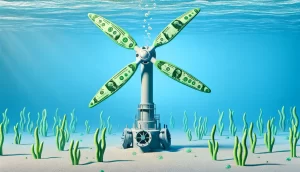Do you know where your energy comes from? Unless you have solar panels on your roof, chances are it isn’t from renewables. But soon it could be.
Using recent data from the Energy Information Administration (EIA) for the entire U.S, the probability is about 66% that the light bulb in your house is being powered by coal or natural gas. That’s a lot of dirty light bulbs.
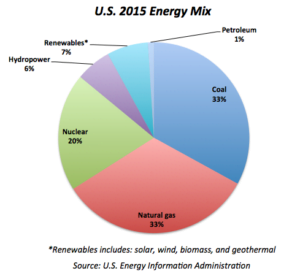
This energy mix will vary across the country, but nearly everywhere you go the percentage of energy generated by renewables is more often than not dwarfed by fossil fuels. Today, even with the rapid increase in renewable energy generation over the last several years, only 7% of our energy comes from renewables. Just 7%! If this doesn’t surprise you, let me put it a different way.
Suppose you are a typical American and enjoy alcohol. It powers your night and makes you feel good (Hey! Just like electricity!). Let’s say you can buy spirits from other countries around the world, but this stuff doesn’t come cheap. The price varies constantly because no one knows how much will be produced for a given time period and to make matters worse the quality is different all over the world. Now you also happen to have a magical river of beer in your town that flows year-round. The beer in the river looks like that weird Unfiltered Wheat Beer, so it needs a special contraption to filter it before you can drink it, but otherwise it’s free and delicious. Now it might take a little more beer to get the same effect as the spirits, but it’s a hell of a lot cheaper. Which do you choose? If you choose beer, then you’ll like renewables, but right now our country is mostly a liquor country.

Fossil fuels are energy dense, relatively easy to transport, and can be used to generate energy at will.
Unfortunately, when we use them as an energy source they produce a lot of carbon dioxide, a gas that leads to a greenhouse effect on a global scale (kind of like a global hangover). They are also a limited resource; it’s not a question of if we will run out, but when we will run out. Remember whales? Sure we’ll get better at finding and drilling for oil and gas, but on a planet with finite resources, this can’t go on forever. Don’t be that guy and mention space oil exploration, not even Elon Musk is thinking about that yet.
Some might say it is unfair to group coal with natural gas. After all, natural gas is significantly cleaner burning than coal. Yes, this is true, but when you use coal as a baseline, it’s not very difficult to look good. This is equivalent to comparing a diet consisting purely of French fries to one consisting entirely of lard; sure fries are a little better for you, but it’s not a diet you want to do for a long time.
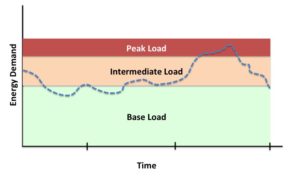
In the long term, natural gas is not a solution, it’s what many people call a transition fuel, an intermediary fuel as we wean ourselves off fossil fuels; it too is a limited natural resource after all. Moreover, while the direct emissions may be better than coal, the fugitive emissions from natural gas (which is largely made up of methane) can actually negate any of its benefits.
Don’t forget the nukes! Here in the U.S. we have a healthy number of nuclear power plants. These plants are very expensive to build and are difficult to shutdown and start-up such that it makes economical sense to operate them almost continuously near rated capacity. These behemoths typically generate what is called our base load for the grid.
Unfortunately nuke plants don’t have the best reputation (*cough*Fukishma*cough* Chernobyl*cough*) and many of the installations in the U.S. are starting to hit retirement age. In fact, the average age of nuclear reactors in the U.S. is 35 years according to the EIA, but their operating license is typically limited to 40 years. What happens to an old nuke plant when it approaches retirement age? No it doesn’t move to South Florida. It’s life can be extended, or the plant can be shut-down.
Around 80% of the approximately 100 operating nuclear reactors (operated by around 60 different plants) have received 20-year license extensions. This isn’t necessarily cause for concern; nuclear plants have a great safety record. No seriously, they really do. But this does point to the fact that we aren’t building very many new plants to replace the old.
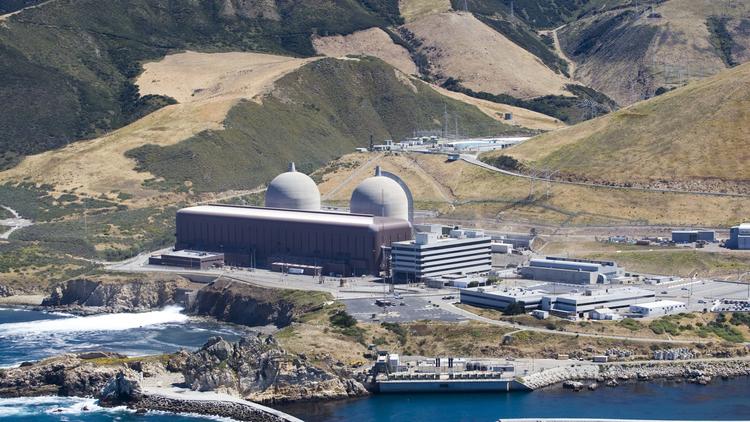
(Joe Johnston /The Tribune of San Luis Obispo)
OK, so fossil fuels are killing us and people are scared of our retirement-age nuclear plants; we need something else. Renewables. As the name implies, renewables are naturally replenished and are on the whole much better for the environment than oil and gas. They siphon off energy from naturally occurring processes such as wind, tides, waves, and solar radiation. Some will be quick to point out that oil and coal are naturally replenished, to which I shall reply: not in your lifetime.
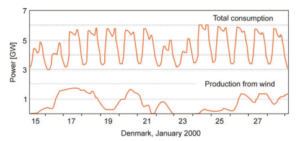
Being natural processes however, they are not guaranteed to produce a constant level of power day-in and day-out like a barrel of good old-fashioned whale oil will. When clouds obscure the sun or there is a lull in the breeze, it leads to a decrease in output from solar panels and wind turbines respectively. This is called intermittency and it is a huge headache for grid operators. We’ll address this in more detail later.
Recently the Obama Administration set an ambitious goal of generating 50% of electricity from clean energy sources by 2025. Ambitious? Yes. Impossible? No. But we’ll need more than solar and wind to get there. We’ll need a balance of several sources for a diversified grid. This being a blog about marine renewables I’ll talk about those. Keep reading in the next installment: “A Liquid Grid”

